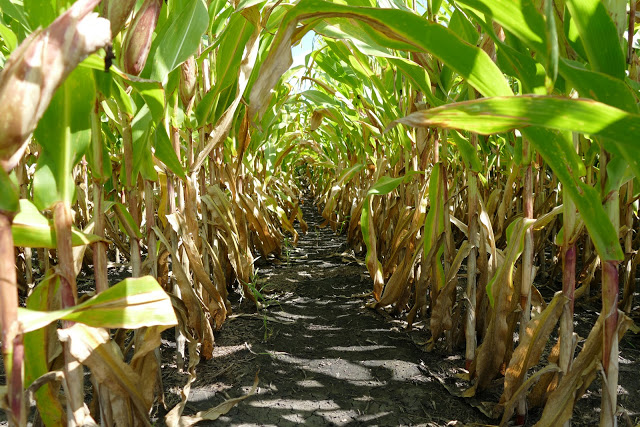September 14, 2018

Source: University of Minnesota
By: Daniel Kaiser, Soil Fertility Specialist and Jeff Vestch, Researcher
Tight profit margins are making decisions on inputs to crops difficult for farmers. Decisions on when and where to use fertilizers can be important to ensure maximum profitability. Decisions on nutrients such as nitrogen are easy for crops like corn, wheat, and sugar beet as these crops will likely respond to nitrogen. Other nutrients such as phosphorus, potassium, and sulfur can benefit crops but it depends on soil test levels and a crops need for a specific nutrient. Here are five frequently asked questions we hear about making fertilizer decisions in the fall.
1. Do I need it or not?
The advent of commercial fertilizers is one of the most important reasons why we have seen crop production increase the past fifty years. While the use of P and K fertilizers has increased the fertility levels of some soils there is a point where additional fertilizer doesn’t give an immediate return on investment (ROI) or the chance of an ROI to the nutrient applied is low. Recent AFREC funded research has clearly shown that fertilizer is needed to increase yield in low P or K testing fields. This research has clearly shown no inherent benefit to maintaining high to very high P-testing soils. Some may argue their highest testing soils are their best producing fields but remember fertilizer is not the only thing dictating yield levels. Reducing inputs on very high testing fields is the best way to use soil testing to improve a farmers’ profitability. If there is hesitation in not applying any fertilizer, a smaller percentage of crop removal could be applied in a high testing situation to ensure maximum yield and reduce overall cost.
2. Is there any difference when using MAP or DAP?
Fertilizer source questions seem to pop up in cycles. With P, questions come up regarding source of liquid (ortho or polyphosphate) or dry sources. While MAP and DAP are somewhat different they both should equally supply P to a crop if the same total rate of P is applied per acre with both products. The products will differ slightly when they react in the soil due to their pH of dissolution, which is more acidic for MAP and basic for DAP. MAP should be better in high pH situations, as it should acidify the soil around the granule, but we have not seen a greater benefit from MAP in Minnesota. More often the decision of what to use is dictated by what is commonly carried by the retailer.
3. How about co-granulated products?
The presence of co-granulated products like Microessentials-S10, S15, or SZ has increased over the years. The main questions here are whether you need the additional nutrients, and if having them all in one granule better than blending them together from multiple fertilizer sources. Having a consistent amount of nutrients per fertilizer granule can help with distribution but do you need all the nutrients? Sulfur is more widely needed across the state, so if some of these products that contain S can offset the need for additional S, then they can be economically feasible. The same is true for zinc if you need it.
4. Do I need to apply potassium?
Research in the use of potassium for corn and soybean production has been ongoing for the past ten years. Projects funded by AFREC and the Minnesota Corn and the Minnesota Soybean Research and Promotion Councils have shown that potassium can be a yield-limiting factor. There are some clear issues identified by this research. For soils higher in clay, like loam and clay loam soil, the potassium soil test can over-predict availability of K in soils, which can lead to under-application of K fertilizer. We suggest growers in central and western Minnesota use 200 ppm as a critical level for soil test K if they are using a maintenance strategy. For the same areas where K tests are around 160 ppm, do not forget about K, particularly ahead of a corn crop. On silt loam soils in the southeastern part of the state a critical level of =160 is enough. On very sandy soils with CEC of 8 or less our research has seen no yield response in corn or soybean when soil test K is > 100 ppm.
5. What about base saturation?
The idea of an ideal base saturation for K is not new and keeps popping up from time to time. In some of current trials, we have looked at the range of base saturations. For soils ranging from silt- to clay-loam soils after ten years of K application, base saturations for K ranging from around 1.5 to over 4% and have seen very little benefit from K application. The sites all started at medium to high soil test levels and after 10 years there have only been sporadic yield responses at the sites. One caution on base saturation is that the cost of the fertilizer needed to change the base saturation is high, particularly on soils high in clay content. For soils testing 200 ppm in K or greater, there is very little chance that additional K will increase yield, even if it changes the base saturation of your soil. Some concepts like base saturation do have roots in scientific literature, but the concepts were developed in other areas of the country with different soils, so the results may not apply to specific Minnesota conditions.
You May Also Like




